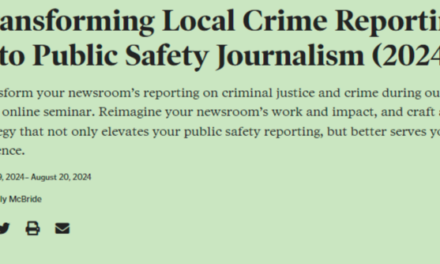So far in the new year, national education outlets have struggled to cover widely varying reopening scenarios and drastically different claims about school safety.
By Alexander Russo
It’s been an enormous challenge for schools to reopen after winter break, given the COVID surge, staffing shortages, parent and teacher fears, and swirling politics. However, the vast majority of schools appear to have pulled it off.
By comparison, national news coverage has not gotten off to nearly as strong a start, over-emphasizing a crisis storyline when school districts’ situations vary dramatically — and failing to give readers useful context around competing safety claims.
“It’s OK to write a story that is nuanced and lays out how complicated these decisions are,” US News and World Report’s Lauren Camera told me when asked to share advice about how to cover the story, “without providing readers any grand take-away about whether it’s risky, safe, feasible, or impossible.”
The silver lining: Thousands more schools are just opening up this week. So journalists will have lots more practice helping readers understand whether school buildings are safe for kids and teachers and able to function.
“It’s OK to write a story that is nuanced… without providing readers any grand take-away.” – US News’ Lauren Camera
Over the past week and a half, national news outlets like the New York Times, Washington Post, and Wall Street Journal have repeatedly over-emphasized dramatic conflicts, setbacks, and shutdowns. Available information suggests that for every district that’s gone remote, there are ten that have managed to stay open with no more than targeted closures. But media coverage focuses relentlessly on the exceptions.
The education team on the New York Times national desk in particular has failed to give the remarkable success of schools reopening the coverage it warrants, continuing its unfortunate tradition of inflammatory headlines (‘It’s Chaos’ as Schools Confront Omicron) and misleading narratives. But the Times is not alone. The Washington Post and the Wall Street Journal have also fallen into this unfortunate pattern.
In addition, national outlets have frequently failed to give readers much-needed context around the competing versions of reality that are being presented, which has the effect of fostering conflict rather than clarifying the debate.
For example, Saturday’s New York Times story about tensions between teachers unions and Democratic lawmakers presented Democratic leaders who say that reopening is safe alongside a series of quotes from local union heads who express concerns about infected teachers and dying teacher’s aides.
“I’d see the entire city of Newark unemployed before I allowed one single teacher’s aide to die needlessly,” said the Newark teachers union head quoted in the Times.
But the story doesn’t vet these claims specifically, leaving readers to try and infer what the real risks are. Are Democratic leaders correct in making safety claims? Is the union leader’s concern warranted?
The closest it comes is a generic statement about how “the Omicron variant, while highly contagious, appears to cause less severe illness than previous iterations of Covid-19… in-school transmission of the virus has been limited.”
Similarly, a recent Wall Street Journal story featured a local health official comparing students’ experience with COVID to the flu, which is a common claim among reopening advocates but requires further clarification given current infection rates and Omicron-level transmission.
And, as noted last week, there’s been precious little reporting from inside schools. The most detailed firsthand look from inside a NYC high school that I saw last week came from a high school student, not a reporter.
Looking for education news commentary and analysis all day, every day? Follow @alexanderrusso.
Are Democratic leaders correct in making safety claims? Is the union leader’s concern warranted?
What can national news outlets do to report this difficult story better?
FOCUS ON WHAT’S WIDESPREAD
First, national education teams need to give readers better information about how widespread setbacks and closure situations may be.
In this regard, the Washington Post did much better than the Times, including a Monday kickoff story and a helpful piece comparing the US approach to reopening to other nations, giving readers a broader perspective. There were no NYT-style tabloid headlines, though Friday’s “schools in crisis” came pretty close.
The recent update on Chicago did well to place that city’s snafu in a national context.
BRACKET SCHOOL SAFETY/RISK CLAIMS
Education journalists would also do well to bracket competing claims being made about school reopening safety with language that describes the risks as clearly as possible.
Here’s how the Times’ David Leonhardt describes the risk situation in his morning newsletter: “Most Americans — including children and vaccinated adults — face little personal risk from Omicron… For the unvaccinated, the situation is very different.”
Not a Leonhardt fan? No problem. Try The Atlantic’s Ed Yong. The main point is for reporters and editors to contextualize the quotes and numbers that they’re presenting to readers. It’s a reporter’s job to put information in context — and an editor’s job to make sure that they do.
GO DEEPER TO TELL A BROADER STORY
Another promising strategy is for reporters to forego a national overview and focus in on what’s going on in one place to illustrate a broader issue.
The Wall Street Journal gave us a dive deep with A Pennsylvania Superintendent Agonizes Over Going Remote, describing one superintendent’s efforts to keep his schools open.
Though it would have been better if the Journal had featured a more representative outcome, this localized approach is one I wish other national education teams would follow.
It’s a reporter’s job to put information in context — and an editor’s job to make sure that they do.
Education reporters and editors also have good ideas for their colleagues:
“It’s impossible to generalize or paint an accurate picture of what’s happening at a national level,” Camera told me earlier this week. “Some schools are pivoting back to remote, but others that began remote are pivoting back to in-person. And it changes every day. My biggest recommendation is to provide lots of examples of how schools are operating and why they decided to choose one strategy over another.”
“My main advice is to report, report, report,” said one education editor who didn’t want to be identified. “Talk to as many people in schools (students and staff) as possible about their experiences and concerns, and to talk with an array of public health professionals.”
“Reporters should rely on data and experts more than opinion,” wrote a veteran education journalist who also didn’t want to be identified. “Don’t just report anecdotes.” If teachers or students are absent, find out how many — and why. (Is it COVID, fear of infection, or vaccine refusal? If it’s COVID, did it come from in-school transmission or somewhere else?) Whatever you do, reporters should “go beyond ‘he said/she said’ stories. Go beyond ‘parents are scared, teachers are scared’ pieces.”
“We now have enough data from enough states (and countries) to avoid both sides-ism on this one,” writes The Atlantic contributor Amanda Ripley, who often writes about schools. To help get through to readers, she recommends data visualization and putting risks in context. “I would definitely (definitely!) help the reader make sense of the risk by comparing it to other risks kids and teachers face,” she writes.
And in order to avoid ending up with a story that falls into what she calls the “two-camp” narrative, Ripley recommends asking people questions like where they feel torn, what their doubts are, or how their risk tolerance has changed over time. “That person — who will reveal their own internal conflict — is a great source to help make this debate more useful and interesting.”
“I would definitely (definitely!) help the reader make sense of the risk by comparing it to other risks kids and teachers face.” – Atlantic contributor Amanda Ripley.
Americans are sharply divided between those who think that reopening is risky and schools are in crisis and those who think that the pandemic can be managed while keeping schools open safely.
Readers are drawn to the sky-is-falling, high-conflict kinds of narratives that journalism keeps providing to us.
And, of course, there are limits to how much vetting of safety claims that a reporter can do. There’s no universally trusted go-to source of information that a reporter can cite, no well-established set of school safety protocols or consensus around what would make schools safe enough.
However, the current practice I’m seeing of stringing together dramatic anecdotes and presenting outlandish quotes isn’t helping, and there are some concrete and feasible ways for beat journalists to do better.
Previously from The Grade
Remote reporting doesn’t work (either)
The media obsession with ‘bad kids’
While media coverage has focused on setbacks, schools have roared back to life
Back to school coverage has been unnecessarily alarmist — again.
ABOUT THE AUTHOR

Alexander Russo
Alexander Russo is founder and editor of The Grade, an award-winning effort to help improve media coverage of education issues. He’s also a Spencer Education Journalism Fellowship winner and a book author. You can reach him at @alexanderrusso.
Visit their website at: https://the-grade.org/













